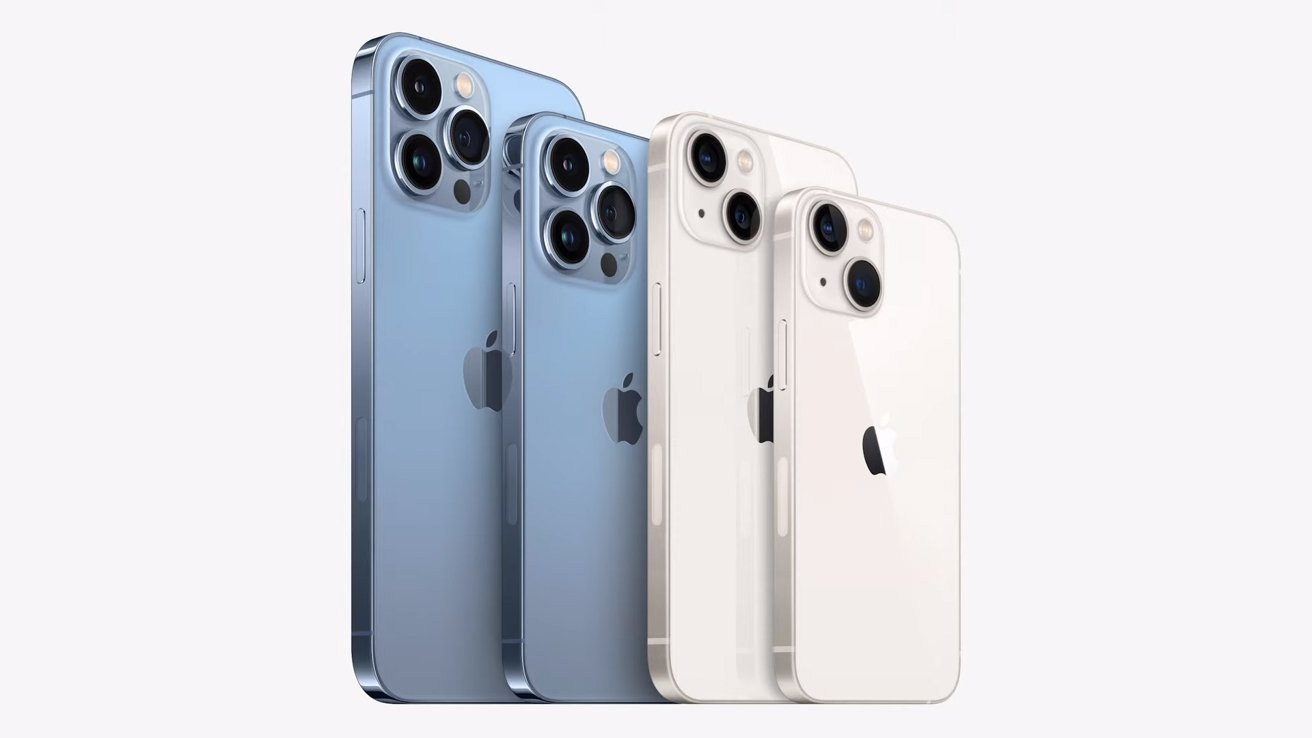iPhone 13 battery capacities have all increased versus iPhone 12
A product safety filing has revealed the official battery capacities of the iPhone 13 lineup, which features larger batteries and better battery life on every single model.

Credit: Apple
At its Sept. 14 keynote event, Apple touted the increased battery life across its iPhone 13 models. The company said the iPhone 13 Pro Max, for example, can last up to 28 hours when streaming video -- the longest battery life yet in an iPhone.
In a product safety brier first spotted by 9to5Mac, Apple has officially revealed the battery capacities of its iPhone 13 and iPhone 13 Pro models. And while increased battery life can also be attributed to chip efficiency, the company has indeed bumped up the battery sizes on all four 2021 iPhones.
The iPhone 13 mini has a 9.57 watt hour battery, while the iPhone 13 has an 12.41 watt hour battery. That represents a 11.6% and 15% increase over the preceding iPhone 12 mini and iPhone 12 models.
There are similar gains on the iPhone 13 Pro lineup. The 6.1-inch iPhone 13 Pro has a 11.97 watt hour battery, up 11% from the iPhone 12 Pro. The iPhone 13 Pro Max has a 16.75 watt hour battery, up 18% from the iPhone 12 Pro Max.
In addition to the larger batteries, it's likely that some of the increased battery life also comes from processor efficiency gains on the A15 Bionic.
Of course, larger batteries also contribute to heavier devices. The entire iPhone 13 lineup is slightly heavier than the iPhone 12 lineup. The iPhone 13 Pro Max weighs 8.46 ounces, as an example, up from the iPhone 12 Pro Max's 8.03 ounces.
Read on AppleInsider

Credit: Apple
At its Sept. 14 keynote event, Apple touted the increased battery life across its iPhone 13 models. The company said the iPhone 13 Pro Max, for example, can last up to 28 hours when streaming video -- the longest battery life yet in an iPhone.
In a product safety brier first spotted by 9to5Mac, Apple has officially revealed the battery capacities of its iPhone 13 and iPhone 13 Pro models. And while increased battery life can also be attributed to chip efficiency, the company has indeed bumped up the battery sizes on all four 2021 iPhones.
| Watt hour | Battery Life (video) | Weight (ounces) | |
|---|---|---|---|
| iPhone 12 mini | 8.57 | Up to 15 hours | 4.76 |
| iPhone 12 | 10.78 | Up to 17 hours | 5.78 |
| iPhone 12 Pro | 10.78 | Up to 17 hours | 6.66 |
| iPhone 12 Pro Max | 14.13 | Up to 20 hours | 8.03 |
| iPhone 13 mini | 9.57 | Up to 17 hours | 4.97 |
| iPhone 13 | 12.41 | Up to 19 hours | 6.14 |
| iPhone 13 Pro | 11.97 | Up to 22 hours | 7.19 |
| iPhone 13 Pro Max | 16.75 | Up to 28 hours | 8.46 |
There are similar gains on the iPhone 13 Pro lineup. The 6.1-inch iPhone 13 Pro has a 11.97 watt hour battery, up 11% from the iPhone 12 Pro. The iPhone 13 Pro Max has a 16.75 watt hour battery, up 18% from the iPhone 12 Pro Max.
In addition to the larger batteries, it's likely that some of the increased battery life also comes from processor efficiency gains on the A15 Bionic.
Of course, larger batteries also contribute to heavier devices. The entire iPhone 13 lineup is slightly heavier than the iPhone 12 lineup. The iPhone 13 Pro Max weighs 8.46 ounces, as an example, up from the iPhone 12 Pro Max's 8.03 ounces.
Read on AppleInsider

Comments
The numbers go the other direction on the 13 pro, though - it has a slightly smaller battery than the 13 (presumably because of the camera assembly) yet the battery life is increased by 5 hours/29% over the 12 pro. On the surface the only difference is that the 13pro has an extra graphics core. I wonder what it is that gives the increased efficiency?